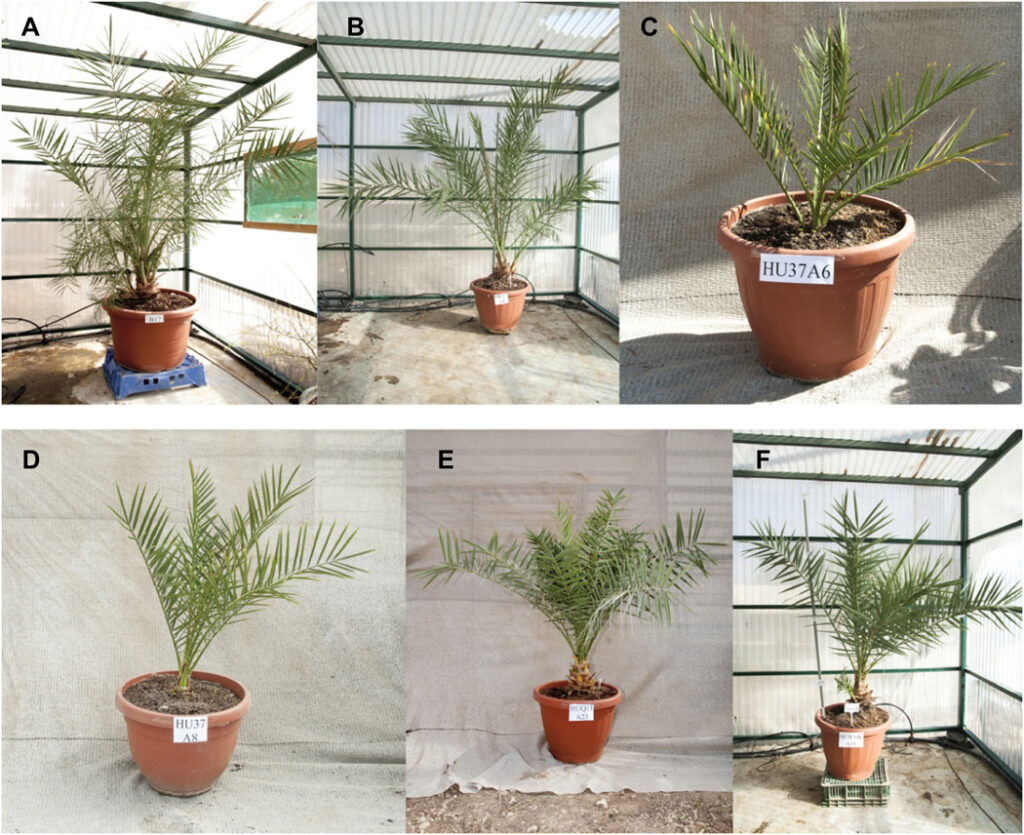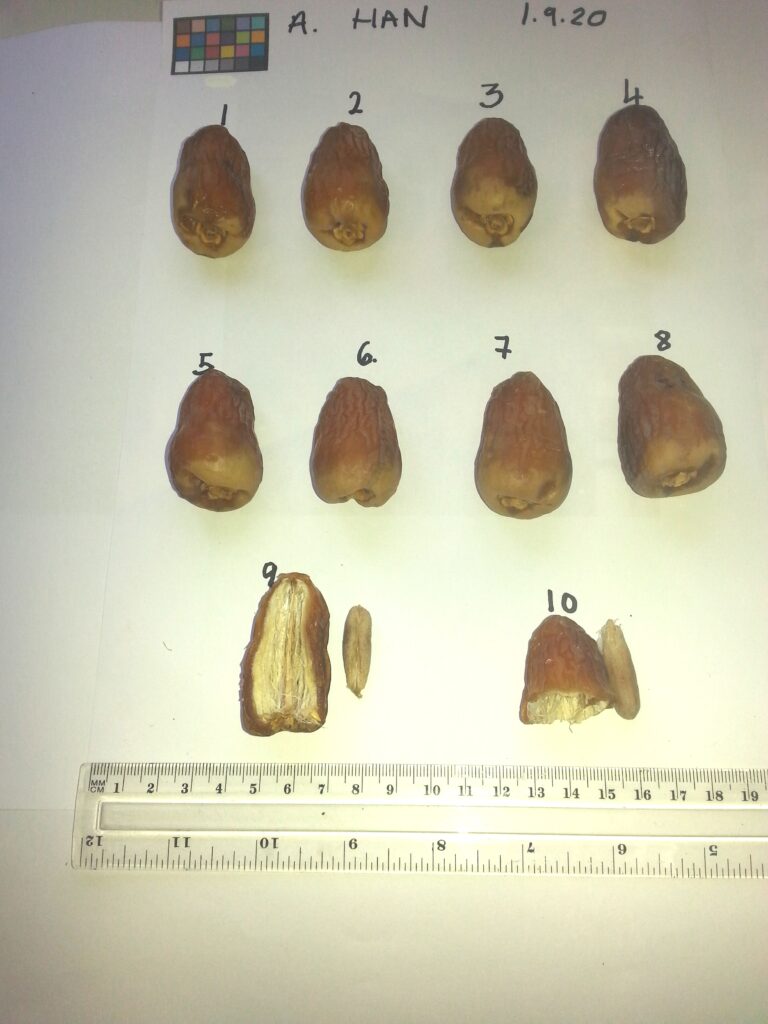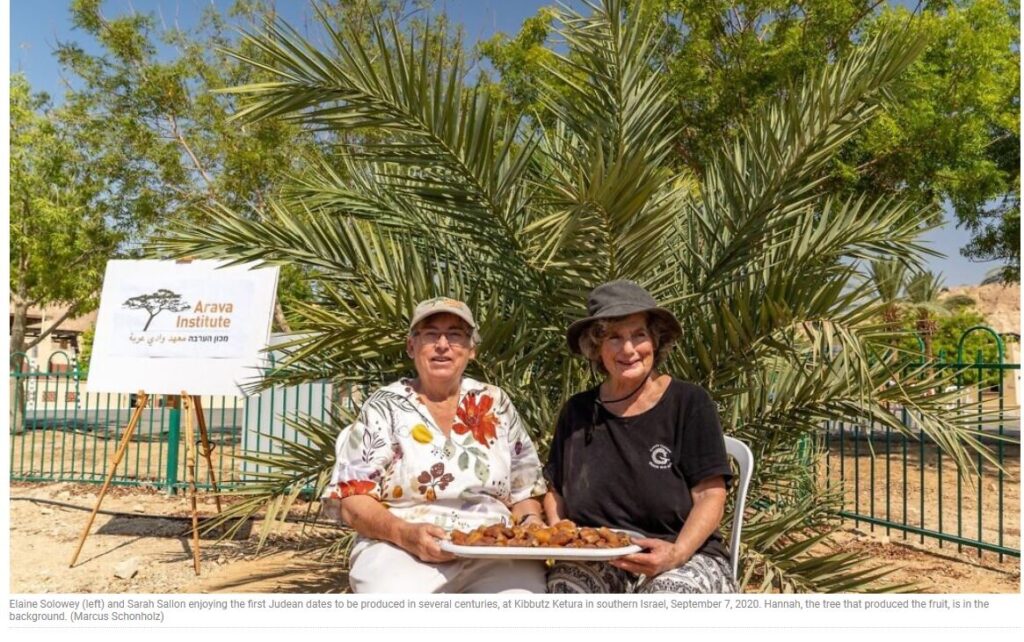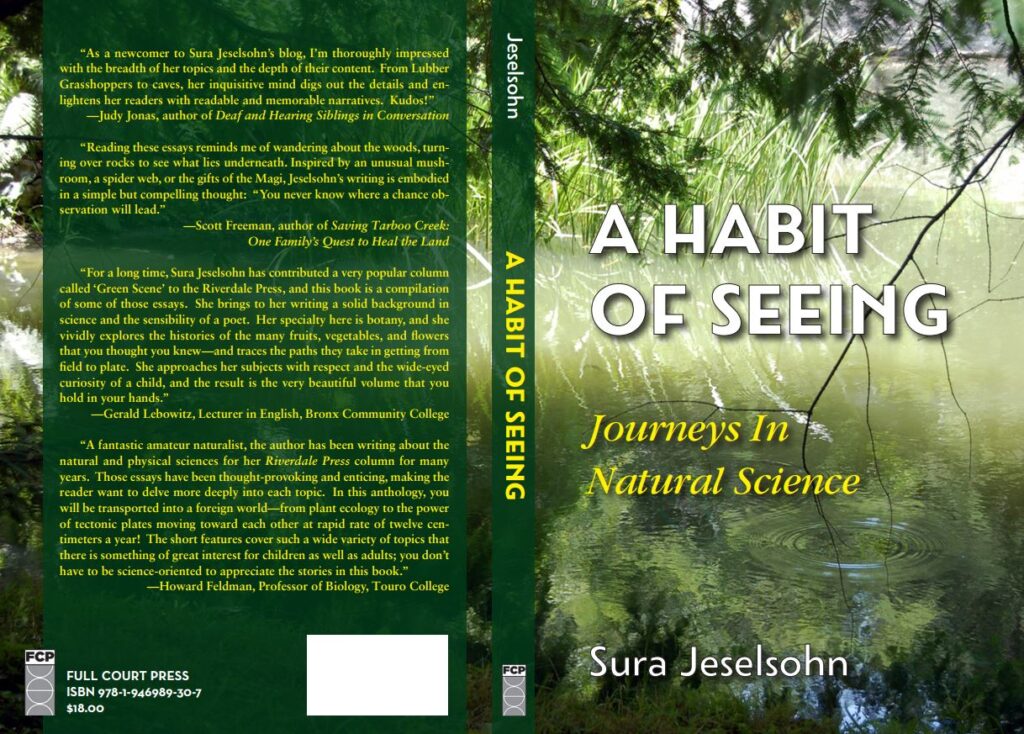Verifying the First Experiment
It was so exciting to have an ancient seed germinate and grow that Sarah Sallon of the Hadassah Medical Center decided to repeat the experiment. This was done to rule out any flukes with the first experiment that yielded Methuselah.
Once again, she asked local archeologists for seeds from their collections and in the end she collected 32 additional undamaged seeds.
These additional seeds came from four locations: Masada, Qumran, Wadi Kelt/Qelt and Wadi Makukh. The cliffs of Qumran, located at the northeastern end of the Dead Sea yielded the Dead Sea Scrolls. Wadi Makukh is a winter water channel also surrounded by high cliffs containing caves that were surveyed 1986-1989. Wadi Qelt is a deep, water-carrying ravine running from the Jerusalem area to Jericho, whose steep cliffs also contain caves. I once had a memorable hike through Wadi Qelt during the height of the summer with the Society for the Protection of Nature in Israel (SPNI).

Locating more Ancient Date Seeds
Again, she turned to Dr. Elaine Solowey of the Arava Institute at Kibbutz Ketura to do the actual germination and growing. The seeds were started at various times between 2007 and 2011. With one successful experience they compiled more complete data on the seeds weighing and measuring them. Then using the same germination protocol of soaking in water and plant hormone solutions, they were potted in fresh soil and everyone held their breaths. Germination times varied with some seeds taking up to six months to germinate.

One seed from Masada germinated around Rosh Hashanah – the Jewish New Year( September/October) – assumed to be the birthday of the biblical Adam and Eve. The seedling that emerged was originally named Eve but upon discovering that it was a male, it was renamed Adam. One seed from Wadi Makukh germinated and was named Hannah after Sallon’s mother. Four seeds from Qumran germinated. One of the germinations occurred Hanukkah-time (December) and was originally named Judah for the hero of the Hanukkah story, Judah Macabee. However, this seedling turned out to be female and was renamed Judith. Ruth and Boaz appeared around the holiday of Shavuot (June) when the Scroll of Ruth is read. (Ruth and Boaz are the ancestors of King David). When Ruth turned out to be male, he was renamed Uriel after Sallon’s son. There is also a Jonah seedling.
Ancient Plant Breeding
Before planting, the seeds were measured and found to be significantly longer and wider when compared to both modern cultured varieties as well as compared to wild or self-sown dates. These measurements correlate positively with the size of the fruit indicating that the fruit from ancient trees was larger than today’s varieties. Genetic studies indicated mixed parentages of the seeds with varying input from more eastern (Arabian Gulf and Iraq) and more western lineages (Morocco). Mixed parentage indicates a sophisticated knowledge of plant breeding by the ancients. Once a desired cultivar has been created by crossing different date species in cultivation, future trees need to be cloned to maintain the desired characteristics.

In order to establish the actual ages of the seeds, shell fragments clinging to the rootlets of the plants that were removed transplantation and were tested by the radiocarbon method. Methuselah, Hannah and Adam were dated from the first to fourth century BCE, Judith and Boaz were dated from mid-second century BCE to mid-first century CE, and Uriel and Jonah were dated from first to second century CE.

When this article was first written the female tree Hannah was eleven years old and was expected to produce flowers in the near future. However due to the pandemic, the article was not printed then. In the meanwhile Hannah has produced flowers that were successfully fertilized by pollen from Methuselah.
Success
The delicious results can be seen in the accompanying photo.

If you have enjoyed this piece, you may be interested in my book, A Habit of Seeing: Journeys in Natural Science.

How exciting to see these ancient plants brought back to life!
Thank you. Puts life in perspective. Shana tova. Esther
I’ve switched from eating so much candy to packaged dried fruits, e.g. prunes, apricots, pineapple chunks, mango slices, cherries, and just today, for the 1st time, I bought pitted dates. In biblical times, were dates pitted?